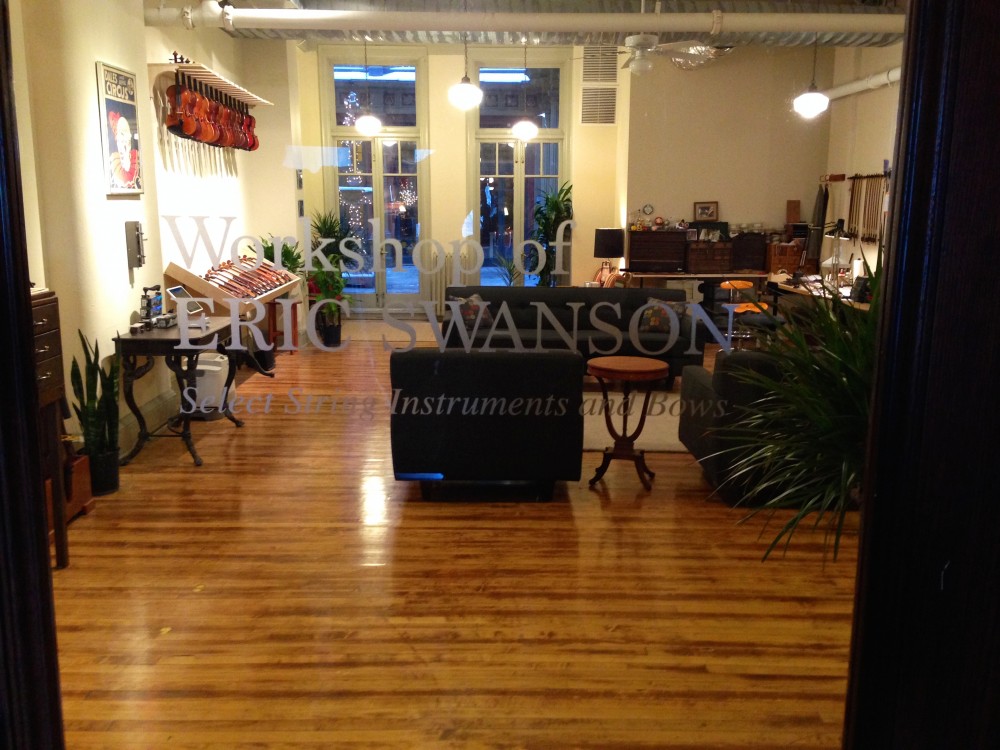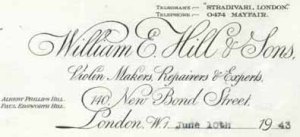Most of these essays are serving double duty. On one hand I seek to educate and guide professional musicians, students, and families while at the same time critiquing and analyzing the violin business from an insider’s perspective for my colleagues. This dual-purpose style may lend itself at times to more strident language alongside more informational passages. It is my utmost desire to avoid being labeled as a naysayer or crank – my goal is simply to improve the lot of musicians, instrument makers, and dealers. Thank you.
If you are looking at an expensive instrument or bow from a dealer and the salesman says there isn’t a certificate, or there may be an old certificate, or that they showed it to so and so and he said this and that, please be careful. If you are told the violin you like was made by a famous maker, but the price, while high, is significantly lower than market price, pay attention.
There seems to be an increase in pricy, antique, but mysterious instruments on the market. It’s perfectly ok if you love an item that is just old and wonderful, unstamped, without a label, or bearing a facsimile label, but it needs to be priced accordingly. So when a dealer implies that the bow or violin you like might be something and the price is steep, please protect yourself by asking for a contingency sale. If there is no good certificate offered by a recognized modern expert, you can say that you will buy the item only if it is certified by one. Because dealers won’t offer opinions on items you have out on approval from other dealers, this is a way to put the onus of identification on the shop you are dealing with. If they truly want to sell the instrument, the shop will handle the certification process. If they come back to you and say that the expert will certify the violin or bow you’ve fallen in love with, then you are protected. The issue of who pays for the cert needs to be decided, however. Some shops may ask you to pay, while others will absorb the cost, and some may split the cost. If the bow or violin does not get certified – it may still be a great item, but the price must reflect the fact that it may not be identifiable. Another scenario is where a dealer may guarantee that the item you are purchasing is certifiable. It would then be up to you to get it certified after you buy it, if you decide to do so. This works well as long as you get everything in writing and are dealing with a shop you have a good relationship with and trust. If the dealer says he only sells instruments he certifies, then that’s a judgment call you will have to make.
Not everything in a violin shop needs a certificate. When you buy something from a dealer, they should provide you with a receipt and an insurance appraisal describing the item and stating what its replacement cost should be if it becomes damaged beyond repair. These documents are just fine for most bows or instruments you may purchase. Many violins have such an obvious identity that a certificate is unnecessary – like a pre-war German Strad copy for example. Other items like an HR Pfretzschner bow are also very clearly real and rarely faked (so far) that to ask of a certificate would be silly. Only when you start to spend substantial amounts of money should you consider protecting yourself, regardless of who you are dealing with. The more expensive the bow or violin, the better known the supposed maker, the more likely someone is trying to make a buck. Be aware that there are many levels of certificate, ranging from a general geographical area to a specific maker. It is up to you to analyze the language of the cert and determine if the asking price if fair given the description provided. Protect yourself when needed and deal with a reputable, knowledgeable dealer with whom you have a good relationship. Realize that many shops don’t issue certificates themselves, and that while some shops may in fact write certs, that doesn’t mean they are worth the paper they are printed on. Do your due diligence and find out who are the recognized experts in the field.
Many auction houses have a glossary of terms in the back of their catalogs to help potential bidders understand the terminology being used to describe the authorship of items on offer. The same concept works for certificates. The more general the language, the less specific the identity, usually the lower the cost, depending on age and origin. There are interesting exceptions in valuation, however. A violin with a certificate stating, Northern Italian, late 18th Century, may have a higher value than a more specifically identified instrument with a certificate stating, Roth Violin, Marknuekirchen, Germany, Guarneri Model, 1923. Why? One violin is older and it is Italian. Even though the language is less specific, the Italian instrument is valued more because of its age and geographical origin.
Authorship Terms as used by Skinner of Boston:
Joseph Guarneri: In our judgment the work is by the maker.
Ascribed to Joseph Guarneri: The work is believed to be by the named maker, in the opinion of the authors of the accompanying certificates or letters.
Attributed to Joseph Guarneri: A traditional attribution with which we may not agree.
Probably by Joseph Guarneri (also possibly): A work which we have no definitive opinion on.
School of Joseph Guarneri: In our judgment the work of a follower executed in the style of the maker or area stated.
Workshop of Joseph Guarneri: In our judgment the work is executed in the style of the named maker and possibly under his supervision.
Labeled Joseph Guarneri (also stamped, branded, etc.): In our judgment the instrument is not necessarily the work of this maker, but bears the makers mark


Pingback: Vichy Auctions | Workshop of Eric Swanson